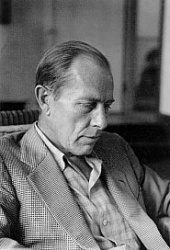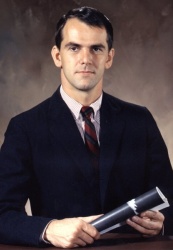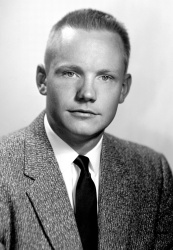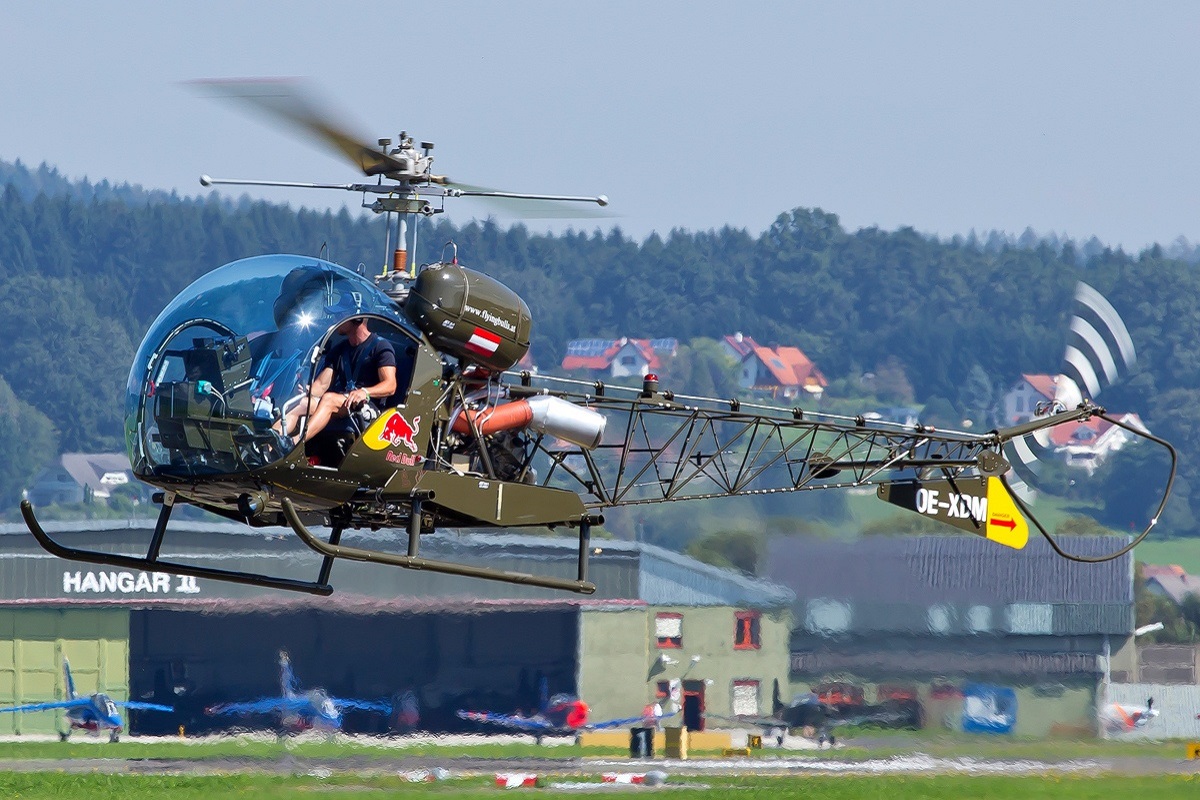 The Bell 47 is a legendary single-engine helicopter, characterized by its open glass cockpit resembling a soap bubble, saddle tanks and admittedly tubular construction. Here in the Czech Republic, she is mainly known thanks to the film and series M*A*S*H, but she first appeared on the screen in the late 1950s in the drama-adventure TV series Whirlybirds. However, the film career of this machine had only just begun. After appearing in two consecutive Bond films (Thunderball and You Only Live Twice), he made his debut in 1968 in the war film Where Eagles Don’t Fly. In 1979, he followed the crime thriller …and justice for all, a year later in the action comedy Superpolda with Terence Hill in the main role, and nine years later also in the film version of the comic book Batman. The forty-seven-year-old ended her career as a film machine in the Australian series Skippy from 1992.
The Bell 47 is a legendary single-engine helicopter, characterized by its open glass cockpit resembling a soap bubble, saddle tanks and admittedly tubular construction. Here in the Czech Republic, she is mainly known thanks to the film and series M*A*S*H, but she first appeared on the screen in the late 1950s in the drama-adventure TV series Whirlybirds. However, the film career of this machine had only just begun. After appearing in two consecutive Bond films (Thunderball and You Only Live Twice), he made his debut in 1968 in the war film Where Eagles Don’t Fly. In 1979, he followed the crime thriller …and justice for all, a year later in the action comedy Superpolda with Terence Hill in the main role, and nine years later also in the film version of the comic book Batman. The forty-seven-year-old ended her career as a film machine in the Australian series Skippy from 1992.
Predecessor icon
 The emergence of the helicopter as we know it today was strongly influenced by the young mathematician Arthur Middleton Young‘s interest in continuing the development of the then still relatively new invention, which was the helicopter. A year after completing his studies at Princeton University, i.e. in 1928, he returned to the family farm in Radnor, Pennsylvania, and began research. He spent a full 12 years experimenting on various models there before taking his results (along with the aforementioned models) to the Bell Aircraft Company in Buffalo. After presenting his research, the company agreed to produce full-scale prototypes, and when America was about to enter World War II in late 1941, Young moved to Buffalo to establish full cooperation with them. That same year he was also granted a patent for a rotor bar stabilizer (also known as a flybar), which he subsequently handed over to Bell, presumably as a guarantee of their newly formed partnership. After that, nothing stood in the way of the development of an experimental helicopter called the Model 30.
The emergence of the helicopter as we know it today was strongly influenced by the young mathematician Arthur Middleton Young‘s interest in continuing the development of the then still relatively new invention, which was the helicopter. A year after completing his studies at Princeton University, i.e. in 1928, he returned to the family farm in Radnor, Pennsylvania, and began research. He spent a full 12 years experimenting on various models there before taking his results (along with the aforementioned models) to the Bell Aircraft Company in Buffalo. After presenting his research, the company agreed to produce full-scale prototypes, and when America was about to enter World War II in late 1941, Young moved to Buffalo to establish full cooperation with them. That same year he was also granted a patent for a rotor bar stabilizer (also known as a flybar), which he subsequently handed over to Bell, presumably as a guarantee of their newly formed partnership. After that, nothing stood in the way of the development of an experimental helicopter called the Model 30.
The first prototype (the so-called Ship No.1) was essentially nothing more than a tubular structure on a wide four-wheel chassis with basic analog avionics and controls, powered by a 120 kW six-cylinder Franklin O-335 engine. The first test launch of the propulsion unit (only at 150 rpm) and the ceremonial christening of the machine on Genevieve took place on December 24, 1942. Five days later, the first tethered flight took place at a height of about 1.5 meters. A. M. Young himself took it into the air for the first time, and the same afternoon the Model 30 was also tested by factory pilot Floyd Carlson. However, in early January 1943, a prototype accident occurred in which test pilot Bob Stanley was seriously injured and the machine had to be repaired. At the beginning of the summer, the repair work was finished, so the first free flight could take place on June 26. The helicopter piloted by F. Carlson performed well in the air and by the end of the following month managed to reach a speed of 110 km/h in flight. At that time it was also fitted with a new tricycle chassis, the hull was covered (largely just covered with canvas) and painted blue with yellow lines.
While these test flights were taking place, the second prototype (Ship No.2) was being built with several major modifications that distinguished it from the first machine. These were mainly a half-shell fuselage and a new tail rotor attachment, but the most fundamental change was the closed cockpit with doors. Unfortunately, the first helicopter was badly damaged in an accident in September 1943 and had to be completely rebuilt, so only number two could be used for testing purposes. In March of the following year, Bell launched a demonstration campaign with this helicopter, but back to Genevieve. After six months, the rebuild was finally complete, the machine was re-designated Ship No.1A, the new yellow-painted sheet metal fuselage was shiny new, and the helicopter could be shown off at the July 4th military benefit show held at Buffalo Stadium.
Although they were only prototypes, they were already used to save people. It first happened on January 5, 1945, when Floyd Carlson and Dr. Thomas C. Marriott rescued test pilot Jack Woolams from a crashed Bell P-59 Airacomet. However, the first official flight for this purpose did not take place until March 14, when two fishermen stranded on frozen Lake Erie were rescued. For this rescue mission, Carlson later received a silver medal from the Treasury Department. At that time, the third specimen (Ship No.3) was under construction, which was equipped with several modifications. Unlike number one and number two, the four-wheeled chassis also had a more advanced instrument panel, but the tubular frame was again without a fairing as in the early days of the Ship No.1 machine. The first flight of the third model took place on 25 April 1945 and it was found to fly the best of all three prototypes. However, the completely open cockpit was considered a major drawback, and therefore A. M. Young decided to solve it by installing a plexiglass cover, reminiscent of a bubble in shape.
Bell 47
Based on this third prototype, the Bell Aircraft Company began development of a completely new type called the Model 47. The first prototype flew on December 8, 1945, and three months later, on March 8, 1946, it became the world’s first helicopter certified for civilian use. Thanks to the great versatility and popularity of the machine, over 5,600 machines have since been produced (including licensed versions). In 1947, the then USAAF ordered 28 improved Bell 47A models with the Franklin O-335-1 engine to test the helicopter’s performance. The first fifteen were redesignated YR-13. Another three, which traveled to tests in cold conditions in Alaska as YR-13A, and the remaining ten designated as HTL-1 were given to the US Navy to be tested as a training machine. Before long, both branches of the armed forces agreed that this was a helicopter with excellent characteristics and contracts were signed for the supply of helicopters.
In 1948, the US Air Force (USAF) received 65 H-13B machines, which soon received the designation Sioux. Other ordered pieces and newer versions have already been registered with this name automatically. At the beginning of the war in Vietnam, the air force used them only as reconnaissance and training helicopters. However, their great potential soon became apparent, and that is why military medical units, the so-called MASH (Mobile Army Surgical Hospital), began to use them to evacuate the wounded. First, for these purposes, in 1952, fifteen H-13Bs were retrofitted with evacuation carriers (stretchers) with a transparent Plexiglas cover protecting the patients from the wind. After proving their worth, the types H-13D with ski chassis and H-13E, which differed from the previous version only by double steering, were subsequently modified. Both versions were powered by a 149 kW Franklin O-335-5 engine. The most common variant, referred to as 47G, began to be produced only at the beginning of 1953. The machine had an all-glass cockpit, saddle fuel tanks and an uncovered tail beam. During development, this helicopter also saw several versions with a fully enclosed cabin and fuselage.
In contrast, the US Navy (US NAVY) used the original designation HTL. It initially ordered twelve pieces of the HTL-2 type, nine pieces of the HTL-3 and several pieces of the flagship version of the HTL-4. They were soon replaced by the newer HTL-5 and HTL-6 with the Franklin O-335-5 engine. HUL-1 ice-breaking helicopters were also used on board US NAVY ships. The last, the seventh HTL type, with dual controls and avionics for instrument flight, served as a training helicopter. The aforementioned type designation was then changed in 1962 to TH-13L (HTL-4), TH-13M (HTL-6), TH-13N (HTL-7) and UH-13P (HUL-1). Two pieces of the HTL-1 type and three of the HTL-5 model were also used by the United States Coast Guard (USCG) until 1960 to support missions in New York Harbor.
Civil variants
Larry Bell’s first vision of a commercial full-hood helicopter was designated the 47B, but only 77 were produced. However, the company did not give up on this vision and in 1955 presented the most luxurious version of the 47G type called the 47H Bellairus. It was a three-seater model with a large proportion of upholstery, a soundproof cabin, modified landing skids and a 133 l fuel tank. Thanks to the very small interior, this type did not attract much interest from the range of customers for whom it was designed, and production ended with only 33 pieces. Even so, the company continued in 1957 with the four-seater model 47J Ranger. The risk paid off and soon after the launch of the model, two machines in the Air Force One version were ordered by the White House. In the end, 343 units of this model were produced by Bell in the United States alone. With the arrival of the (later most widespread) G version, the machine gained better and better features thanks to constant improvements to this variant. These are primarily improved rotor blades, enlargement of the cockpit cabin, which allowed the helicopter to accommodate a crew of up to three, increasing engine power and tank capacity. Later types were even fitted with turbocharged power units with a power of up to 209 kW. The strongest “heart” of the helicopter was apparently the classic Lycoming VO-540 installed in the last few years of production. The production of these helicopters in the Bell factories was completed in 1973 with the Bell 47G-5 version.
The sister company Scott-Bell 47, Inc. attempted to revive the production of these helicopters. at Heli-Expo 2013 with the introduction of the 47GT-6 model. The exhibited machine had a Rolls-Royce RR 300 engine installed, rotor blades made of composite materials, external LED lighting and a completely new interior including the so-called glass cockpit. The company also hoped to reduce operating costs by using modern powertrain technologies. After the show, the company expected a 30-month flight test program to take place and production to begin in 2016. As late as 2014, Rolls-Royce confirmed a pre-order for 38 helicopter engines. However, as of October 2020, there is no further news about the project and it is assumed that development has been completed.
Modifications and Licensed Production
During the entire production, the Bell company was also involved in the modification of variants for specific civilian purposes. Probably the most famous of them is the conversion of the Bell 47-B type into an agricultural version of the Bell 47B-3 with an open cockpit and front shield (see photo gallery). Over time, Carlson and Continental Copters Inc. also engaged in specialized conversions. The former converted these helicopters into high-performance machines under the name Carson Super C-4, while the latter specialized in a range of helicopters intended exclusively for agricultural purposes and referred to as El Tomcat series. A few pieces with the installation of turboshaft engines were also made by the Soloy company.
In 1952, the Italian manufacturer Augusta obtained a license to manufacture these helicopters, which were then referred to as Augusta-Bell 47 (sometimes also AB 47). After two years of various administrative processes, tests and certifications necessary for production, the first licensed helicopter of the G variant was produced. Since then, this company has produced more than a thousand pieces of the G and J versions. In 1961, the company also started working on its own by the machine designated as A.115, which was based on Bell’s type 47. However, the entire project was terminated prematurely and only one airworthy prototype was produced. The company made one more attempt at its own type in 1970, when in collaboration with another Italian firm, Elicotteri Meridionali, it produced one demonstrator called the Meridionali/Agusta EMA 124. It used dynamic components, a tubular tail spar design and skid chassis from the original Bell 47 . On this basis, more aerodynamically shaped front cabins for three people and fuel tanks and engine cover with an improved shape were installed. However, unlike the original, this machine did not have rotor stabilizer bars. Although the prototype finally flew for the first time on May 28, 1970, it did not bring any further new knowledge and was therefore discontinued.
In 1953, the Japanese company Kawasaki also obtained a license, which then referred to these machines as the Kawasaki KH-4 during production. They differed from the original mainly by a larger and more elongated, fully enclosed cabin from which it was possible to remove the side doors and fly without them. Another difference was the space behind the pilot for three passengers, sitting next to each other on a relatively comfortable bench. In addition to these visible differences, the helicopter also had a new steering control system, modified instrumentation and an increased fuel supply. A total of around 211 examples were produced, including four converted from Bell 47G helicopters. Except for a few helicopters purchased by the armed forces of Japan and Thailand, most were then operated by private users.
The Apollo program

 Since 1961, Bell 47 helicopters have also been a very important element used for the basic training of astronauts in the Apollo program. Together with the special vehicles (LLRV and LLTV), developed by Bell Helicopter Textron directly for these purposes, they were supposed to help the cosmonauts master the later control of the lunar modules on the Moon. However, even the American cosmonauts did not avoid accidents with these training machines. Neil Alden Armstrong himself was forced to use an ejection seat just 18 meters above the ground on May 6, 1968, after the plane ran out of jet fuel due to high winds. American astrophysicist Curt Michel briefly and succinctly explained the reason why Bell 47 helicopters were chosen for training during an interview in 2009:
Since 1961, Bell 47 helicopters have also been a very important element used for the basic training of astronauts in the Apollo program. Together with the special vehicles (LLRV and LLTV), developed by Bell Helicopter Textron directly for these purposes, they were supposed to help the cosmonauts master the later control of the lunar modules on the Moon. However, even the American cosmonauts did not avoid accidents with these training machines. Neil Alden Armstrong himself was forced to use an ejection seat just 18 meters above the ground on May 6, 1968, after the plane ran out of jet fuel due to high winds. American astrophysicist Curt Michel briefly and succinctly explained the reason why Bell 47 helicopters were chosen for training during an interview in 2009:
Among heavier-than-air aircraft, the helicopter was closest in characteristics to the lunar lander. So if you didn’t get helicopter training, you knew you couldn’t fly.
Of these special machines, only two LLRV-2s and one LLTV-3 have survived to this day, one of the two LLRV-2s on display today at the Air Force Flight Test Museum at Edwards Air Force Base. The last complete LLTV-3 in existence can be seen at the Lyndon B. Johnson Space Center (JSC).
Photogallery:
Bell 47G
Version:
- Bell 47
- Bell 47A
- Bell 47B
- Bell 47B-3
- Bell 47C
- Bell 47D
- Bell 47D-1
- Bell 47E
- Bell 47F
- Bell 47G
- Bell 47G-2
- Bell 47G-2A
- Bell 47G-2A-1
- Bell 47G-3
- Bell 47G-3B
- Bell 47G-4
- Bell 47G-5
- Bell 47H-1
- Bell 47J Ranger
- Bell 47J-1 Ranger
- Bell 47J-2 Ranger
- Bell 47J-2A Ranger
- Bell 47J-3
- Bell 47J-3B1
- Bell 47K
- HUL-1
- HUL-1G
- HUL-1M
- HUL-2
- HTL-3
- HTL-5
- HTL-7
- H-13B-D
- HH-13Q
- OH-13E
- OH-13G
- OH-13H/UH-13H
- OH-13K
- OH-13S
- Sioux AH.1
- Sioux HT.2
- M74 Wasp**
- M74A**
- M79S Wasp II**
- M79T Jet Wasp II**
- TH-13L
- TH-13M-N
- TH-13T
- UH-13J
- UH-13P-R
- XH-13F/Bell 201
- YR-13/HTL-1
- 3 YR-13*
- YR-13A
- YH-13C
- Scott-Bell 47GT-6
Conversion:
- Carson Super C-4
- El Tomcat Mk.II
- El Tomcat Mk.III
- El Tomcat Mk.IIIA
- El Tomcat Mk.IIIB
- El Tomcat Mk.IIIC
- El Tomcat Mk.V
- El Tomcat Mk.VA
- El Tomcat Mk.VB
Licensing version:
- Agusta Bell 47G
- Agusta A.115
- Meridionali/Agusta EMA 124
- Kawasaki KH-4
| Manufacturer | Bell Helicopter Textron |
| Crew | 1 pilot |
| Capacity | 1-2 passengers |
| Airplane type | Helicopter |
| Engine | Lycoming TVO-435-F1A |
| Engine power | 210 kW |
| Speed | travel 135 km/h maximum 169 km/h |
| Rotor diameter | 11,32 m |
| Rotor area | 100,8 m² |
| Length | 9,63 m |
| Weight | empty 858 kg take-off 1340 kg |
| Available | 5 400 m |
| Flying range | 395 km |
*in 1948 it was renamed YH-13A
**variant for agricultural work produced by Texas Helicopter Corporation
source:
http://cs.wikipedia.org/wiki/Bell_47
http://en.wikipedia.org/wiki/Bell_47
https://en.wikipedia.org/wiki/Bell_30
https://cs.wikipedia.org/wiki/Agusta_A.115
https://cs.wikipedia.org/wiki/Kawasaki_KH-4
https://en.wikipedia.org/wiki/Arthur_M._Young
http://www.bell47.net/Family/_Bell47Family.htm
https://en.wikipedia.org/wiki/Scott%27s_–_Bell_47
http://www.aviastar.org/helicopters_eng/bell_30.php
http://www.aviastar.org/helicopters_eng/bell_sioux.php
https://cs.wikipedia.org/wiki/Meridionali/Agusta_EMA_124
https://en.wikipedia.org/wiki/Lunar_Landing_Research_Vehicle






































